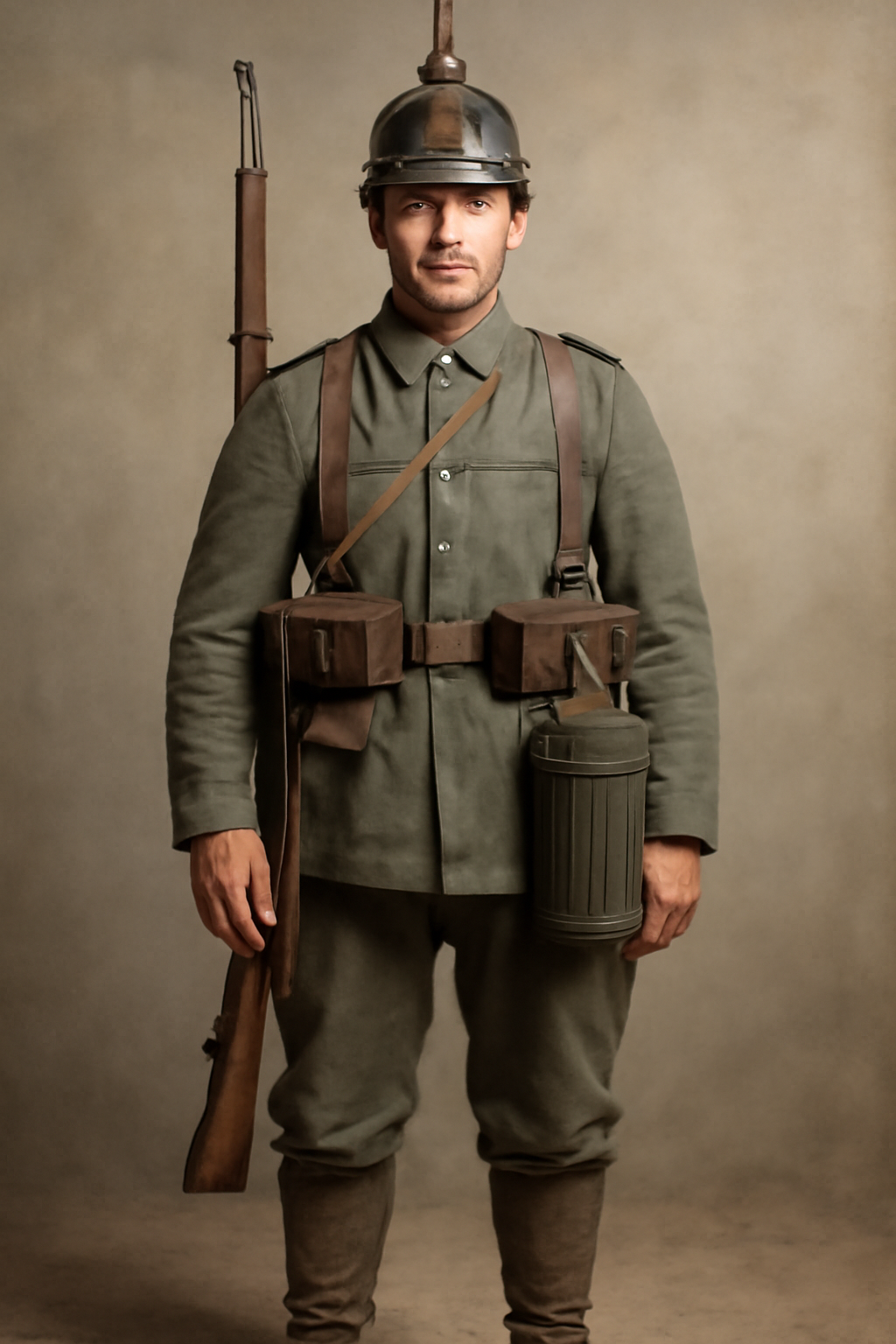
World War 1 German Helmets for Sale: A Collector’s Guide to Authentic Military Gear
Published on Oct 02, 2025
Introduction: Why Collect WW1 German Military Gear?
Did you know that over 10 million German helmets were produced during World War 1, and yet original pieces are increasingly rare today? For history lovers and collectors, owning authentic WW1 gear is like holding a piece of the past in your hands.
Whether you’re looking at World War 1 German helmets for sale, admiring the detail of a German knife from WW1, or comparing uniforms like the Austro-Hungarian helmet WW1 styles, militaria collecting is both a rewarding hobby and an investment.
But here’s the challenge:
- The market is full of reproductions.
- Prices vary wildly.
- Many new collectors don’t know where to start.
This guide will help you navigate the world of WW1 German military gear, avoid common mistakes, and understand the latest collecting trends.
World War 1 German Helmets for Sale: What Every Collector Should Know
The German Stahlhelm (“steel helmet”) is one of the most recognisable symbols of WW1. First introduced in 1916, it replaced the spiked Pickelhaube and offered superior protection on the battlefield.
Key Types of WW1 German Helmets:
- M1916 Stahlhelm – the first mass-issued steel helmet.
- M1917 Stahlhelm – improved liner system and ventilation.
- M1918 Stahlhelm – simplified design, setting the stage for WW2 helmets.
What to Look For in Authentic Helmets:
- Original paint & decals – Look for age-appropriate wear, not freshly applied finishes.
- Liners & chinstraps – Original leather often shows cracking, but not modern stitching.
- Maker’s marks – Authentic pieces usually feature stamped factory codes.
Pro Tip: Never rush to buy the first item you see labelled “original”. Compare at least 3–5 listings before deciding.
Where to Find Authentic WW1 German Helmets for Sale
- Specialised militaria dealers – Reputable sellers often provide certificates of authenticity.
- Military auctions – Places like Hermann Historica or Bonhams regularly feature rare items.
- Collector forums – Online communities can help verify items before purchase.
- Estate sales & flea markets – Hidden gems sometimes appear in unexpected places.
⚠️ Pitfall to Avoid: Many helmets online are reproductions aged with artificial rust or fake liners. Always request detailed photos before purchasing.
Austro-Hungarian Helmet WW1 vs German Stahlhelm
Collectors often confuse the Austro-Hungarian WW1 helmet with German models. Here’s how to tell them apart:
- Austro-Hungarian Helmets:
- Typically have a rougher finish.
- Features unique chinstrap fittings.
- Often produced under licence from Germany.
- German Stahlhelms:
- More standardised in design.
- Usually, better-preserved examples are due to larger production numbers.
For collectors, both are highly desirable, but German helmets generally command higher prices because of their iconic status.
Beyond Helmets: Other WW1 German Military Gear Worth Collecting
German Knife WW1
The trench knife was a vital tool for close combat. Originals often have wooden grips and a simple scabbard. Beware of modern reproductions with overly polished blades.
WW2 German Field Gear (for crossover collectors)
Many collectors of WW1 gear also branch into WW2 German field gear, such as:
- Bread bags
- Gas mask canisters
- Y-straps and belt buckles
These items share design lineage with WW1 equipment, making them appealing for those who want to build a full collection across eras.
German Pea Dot Camo
Though technically a WW2 innovation, the German pea dot camo pattern is popular among collectors who appreciate camouflage evolution. Many reenactors use this pattern to create historically accurate impressions.
Actionable Steps for New Collectors
- Start Small – Instead of jumping straight into big-ticket helmets, begin with smaller items like medals or trench knives.
- Research Constantly – Use reference books, online forums, and museum collections to train your eye.
- Network with Collectors – Joining militaria clubs can help you spot fakes and get first access to private sales.
- Document Purchases – Keep receipts, seller information, and photos to maintain provenance.
- Store Gear Properly – Use acid-free boxes, avoid direct sunlight, and maintain low humidity.
Current Trends in WW1 and WW2 Collecting
- Rising Prices: Authentic helmets and field gear are becoming more expensive as supplies dwindle.
- Digital Verification: Collectors now use online databases to track stolen or fake items.
- Crossover Collecting: Many enthusiasts move from WW1 gear into WW2 German field gear to complete their collections.
- Reenactment Growth: With events gaining popularity, items like German pea dot camo uniforms are in high demand.
Common Pitfalls to Avoid
- Buying Without Provenance – If the seller can’t provide history, think twice.
- Confusing Reenactment Gear with Originals – Reproduction helmets are good for displays, but shouldn’t be priced as originals.
- Over-Cleaning Items – Never polish trench knives or repaint helmets; this can destroy historical value.
- Impulse Buying – Patience pays off. The right piece will eventually appear.
Conclusion: Building a Collection That Lasts
If you’re searching for World War 1 German helmets for sale, remember that authenticity, patience, and knowledge are your best allies. From the iconic Stahlhelm to unique items like the German knife from WW1 or even an Austro-Hungarian helmet from WW1, every piece tells a story.
By learning to spot fakes, networking with trusted sellers, and following current trends, you can build a collection that not only grows in value but also preserves history.
